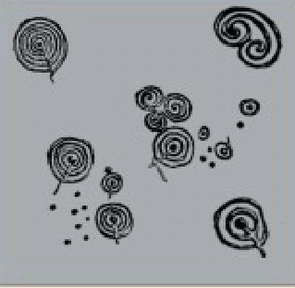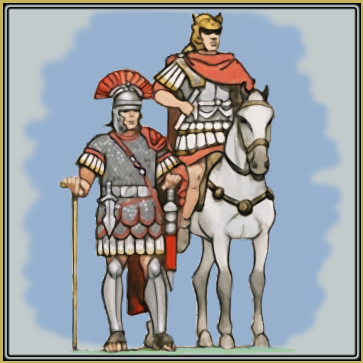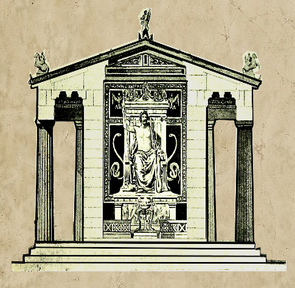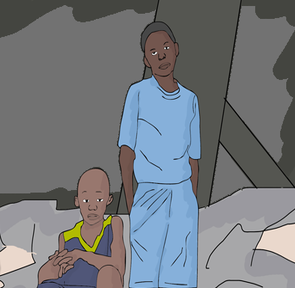
Audience: KS2
Subject: History / English
Topic: Group discussion and interaction, Victorian era, 19th century, inventions
Question: Should the Booth family move to Manchester?
Author: Anne de A’Echevarria
Description
Should the Booth family move to Manchester?
This mystery has been designed particularly with the History and English curriculum in mind. It can also be used to foster the development of generic higher order thinking skills.
History
The new National Curriculum 2014 demands that pupils study an aspect or theme in British history that extends their chronological knowledge beyond 1066. This mystery could be used to that end, for example, by supporting a study into why towns grew in the 19th century, or how key inventions, such as steam power, represented a significant turning point in British history for the manner in which they effected our economy and society. The mystery could also support a local history study into the effects of industrialisation and population movement (particularly for pupils living in areas effected by the textile industry).
The mystery helps pupils to address historically valid questions about change, cause, similarity and difference, and significance. It encourages pupils to construct informed responses that involve thoughtful selection and organisation of historical information.
English
The mystery could also be used to help pupils learn and understand the conventions of discussion. Relevant learning objectives might include:
- make contributions relevant to the topic and take turns in discussion;
- vary contributions to suit the activity and purpose, including exploratory and tentative comments where ideas are being collected together, and reasoned, evaluative comments as discussion moves to conclusions;
- qualify or justify what you think after listening to others' questions or accounts;
- deal politely with opposing points of view;
- use different ways to help the group move forward, including summarising the main points, reviewing what has been said, clarifying, drawing others in, reaching agreement, considering alternatives.
Thinking skills
Learning objectives relating to the generic thinking skills that the mystery aims to develop might include:
- to justify ideas with reasons.
- to form a well-structured argument.
- to speculate and draw inferences from information.
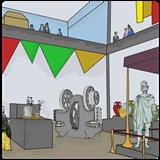
Audience: KS2
Subject: History
Topic: History, Victorians, Inventions, Great Exhibition, Engineering
Question: Why did Charles Featherstone only visit the Great Exhibition once?
Author: Gavin Johnston
Description
In this mystery a fictional character (Charles Featherstone) is introduced as someone who visited the Great Exhibition. However we know he only visited once – but why? We learn about Charles as a typical rich Victorian man, where he lived and how he lived. More importantly we learn about the Great Exhibition – what was inside, how much it cost to enter and what people thought about it. We learn that the price to gain entry changed to engage more visitors and the consequences this had.
During this mystery we find out about the important event of the Great Exhibition which was help in Victorian times to celebrate Britain as a Great Industrial nation. Children will learn the importance of emerging technology in Victorian times and how the wider population were encouraged to come and see it in action. We also learn about the changing view of the world as ordinary people found out about the wider world through seeing the artefacts and machinery on display.
Audience: KS1/2
Subject: History
Topic: War, poppy, service, history, remembrance, armistice
Question: Why did Sarah attend the Remembrance service?
Author: Lynne Flint
Description
This mystery aims to teach children about Remembrance Day and the reasons behind the services held each year. It uses facts associated with the world wars and explains some of the symbols related to remembrance and how they are used.
Upon solving this mystery, children will:
- know that Remembrance Day has its origins in events in the past which really happened.
- appreciate that Remembrance Day touches directly on some people's lives today through their personal experience of war in the past and/or now.
The task involves students learning about a fictional character called Sarah and things about her life including family, hobbies and school. There are three difficulty levels to choose from. On the 'easy' setting, there are 10 slips of information; on 'medium', there are 20 slips of information and on hard, there are 24 slips of information.
Learning outcomes
History objectives covered include learning:
- that commemorations are linked to specific events in the past which really happened.
- when World War One and Armistice Day occurred.
- why specific symbols are associated with commemorations.
- that some important events are commemorated by people in Britain and the wider world.
Subject: History
Topic: Neolithic, Bronze Age, traditions, pre-history
Question: Why did Neolithic and Bronze Age people carve cup and ring marks into rock?
Author: Gavin Johnston
Description
This is a mystery about the Neolithic and Bronze Age cup and ring marks which are found all over the world. These marks were created up to 5000 years ago and there are many suggestions as to why they were made.
During this mystery the children learn about the Neolithic and Bronze Age traditions. The children learn when the cup and ring marks were created and how they could have been made. After this the children learn about the possible significance of the shapes and how they could have been used. Children can come to their own conclusions about the mystery of the cup and ring marks.
There are three different difficulty levels on this mystery. To change the difficulty, go to the Settings menu. On 'easy' there are 15 slips, 'medium' there are 19 and 'hard' there are 24. A different set of hints on grouping and sequencing ideas are provided in each level.
Please also see the additional sub-questions suggested. These do not appear when the session is in-play, but we recommend noting them down or writing them on the board, if you think they would be useful.
This task could lead to students doing their own research on the topic and seeing if this changes their answer.
- Begin to develop an understanding of Neolithic and Bronze Age traditions
- Learn about when cup and ring marks were created
- Read about and discuss how cup and ring marks could have been made
- Learn about and debate the possible significance of cup and ring marks and why they may have been used
Audience: KS2
Subject: History, English, PSHE
Topic: Romans, Hadrian’s Wall, Empire, fort, Maximus
Question: Why did Maximus leave Hadrian’s Wall?
Author: Gavin Johnston
Description
This is a mystery about Maximus – a Roman Cavalryman who was posted at Segedunum on Hadrian’s Wall. We find out about aspects of Maximus’ life and his role on the wall.
During this mystery the children learn about the importance of Hadrian’s Wall as the border of the Northern Frontier. We learn about possible reasons as to why the Romans left and evidence about why Maximus in particular left the Wall to be garrisoned in Rome. There are many possible reasons for his departure – which do you believe to be true?
Audience: KS2
Subject: History
Topic: Ancient Greece
Question: What is Theo most proud of about Ancient Greece?
Author: Gavin Johnston
Description
This mystery points to the National Curriculum 2014 point 'Ancient Greece – a study of Greek life and achievements and their influence on the western world'.
It helps pupils understand the legacy of Ancient Greece through the fictional character of Theo. It enables pupils to understand the aspects of Theo’s life he sees as important and begin to understand how these have affected our lives today – the legacy.
The mystery includes information on Ancient Greek Olympics, the arts (theatre), Architecture, writing and democracy. Information is given out at three different levels and there are also ‘red herrings’ which give extra information about Ancient Greece but don’t add to the pupils’ knowledge when solving the mystery. Pupils have to decide which parts of his life they think are the most important.
Another suggested main question for this mystery is ‘What is the most important legacy of the Ancient Greeks?’
- To investigate and interpret the past
- To build an overview of world history
- To understand chronology
- To communicate historically
Audience: KS3
Subject: History
Topic: Exploration, Conquest, Explorers, New World, Conquistadors
Question: Why did young Spaniards like Pablo Abrantes join voyages of exploration to the New World, which led eventually to the control by Spain of most of South America?
Author: Elizabeth Doyle
Description
This resource is intended to help students investigate the conquest of the South American continent by Spain, and does so by considering the experience of one fictional character, Pablo – a Spanish sailor. Once the ‘narrative’ of the young man’s journey has been established, this focus (on the experience of one young man) could help students to imagine the various reasons why someone could be attracted to such a risky venture. This can then be used as a backdrop to the wider issue of the actions and intentions of the European nations and rulers as a whole.
As well as the ‘push’ and ‘pull’ factors which motivated the Spanish to explore, it is hoped that the students will reflect upon the ways that the conquered peoples came to embrace the settlers, and whether or not they could be deemed to have been complicit in their own fate.
These events provide an important ‘backdrop’ for studies into the various power struggles and political and religious tensions that characterise European History throughout the Fifteenth and Sixteenth Centuries. The social, racial and religious factors are also interesting, and the more able students may be able to relate these to other historical scenarios, and perhaps to more contemporary issues and areas for discussion.
This task has three difficulty levels. On 'easy' there are 20 slips, on 'medium' there are 26 slips and on hard, there are 28.
- Discuss reasons why someone like main character, Pablo, would be attracted to this venture
- Explore the wider issues of actions/intentions of European nations and rulers as a whole
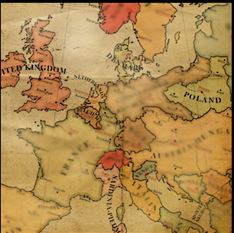
Audience: KS4/KS5
Subject: Geography
Topic: Migration, Society, Economy, Politics, Citizenship
Question: Why does Adrianna call London home?
Author: Paul Lawrence
Description
The mystery surrounds the international migration of Adrianna to the UK (London) from Poland. The mystery covers the major push and pull factors associated with migration. The factors can be split into push and pull and then extended to social, economic, physical and political. Some of the statements will promote discussion within groups and lead onto the advantages and disadvantages of the migration for the host and source countries.
The mystery can be used at Key Stage 3, at Key Stage 4 – it fits the OCR B syllabus and Key Stage 5 – the Edexcel AS syllabus (unit 1.)
Pupils should know the difference between a push and pull factor as well as the difference between social, economic and political factors.
The mystery can also be used in citizenship lessons and it is designed to give an overview of the process of migration as well as being used as a stimulus to discuss the changing nature of the UK.
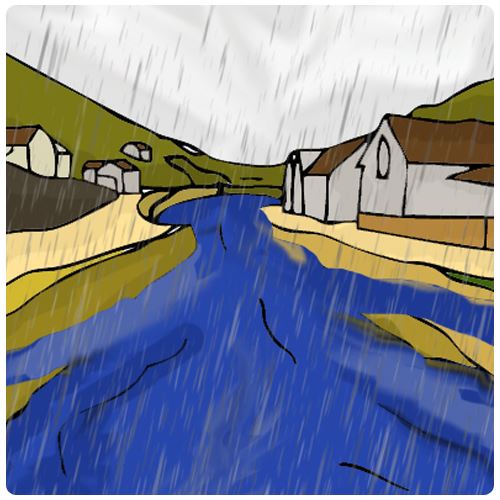 Audience: KS3/KS4
Audience: KS3/KS4
Subject: Geography
Topic: Flooding, Society, Economy, Nature, Environment, Climate, Causes
Question: Why is Colin facing his worst fears?
Author: Paul Lawrence
![]()
Description
The mystery surrounds the flooding in Boscastle in 2004. This involves solving the mystery of why Colin is facing his worst fears. It can be used at Key Stage 3 to look at the causes and effects of flooding and as a detailed case study at GCSE (flooding in an MEDC).
There are additional sub-questions suggested that can be asked throughout the session such as 'what caused the flood that led Colin to be facing his worst fears?'
• Be able to identify and explain the key causes and effects of the flood
• Causes can be split into physical, climatic, human causes
• Effects can be split into social, economic and environmental effects
• A time line can be created and the response of the emergency services considered
Advanced groups can rank the causes in order to explain which they think were the most important – a diamond nine template could be used for this. The mystery can then lead onto how flooding can be reduced/managed in the future.
Audience: KS3/KS4
Subject: Geography
Topic: Nature, Earthquake, Disaster, Society, Economy, Poverty, Causes
Question: Why was the Haiti Earthquake in 2010 so devastating for the country?
Author: Paul Lawrence
Description
The mystery surrounds the Haiti earthquake in 2010 and why it was such a devastating event for the country. It considers the risk of tectonic hazards to the country due to its physical location as well social and economic factors that have made it vulnerable to disaster. Primary and secondary effects are also covered that can lead to discussion towards why so many people died.
• Be able to sequence the different stages of an earthquake
• Identify both the physical causes and human factors that led to such devastation
• Understand the social and economic factors that have left Haiti vulnerable to natural disasters
• The difference between primary and secondary effects
• Discussion on why Haiti is stuck in a cycle of poverty


